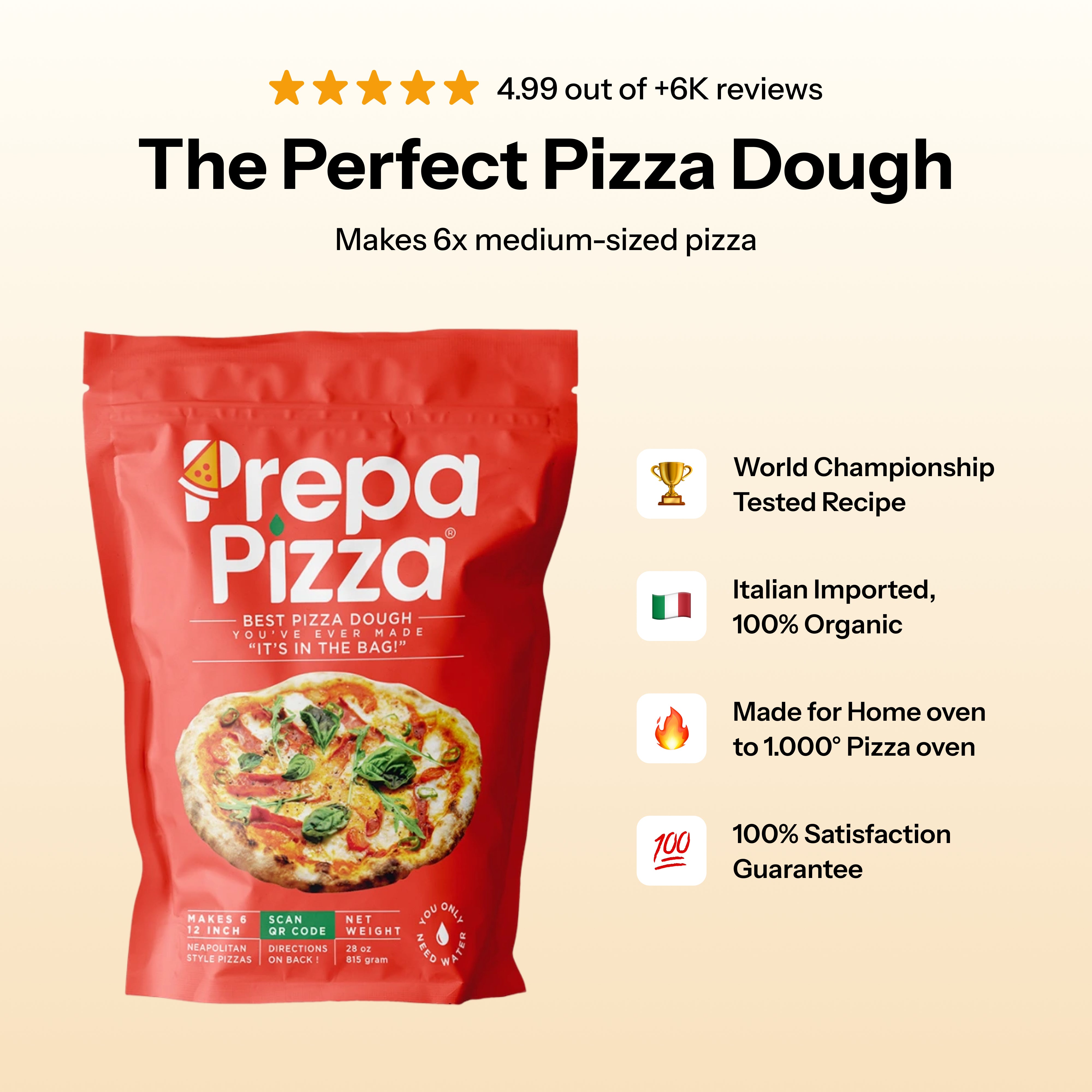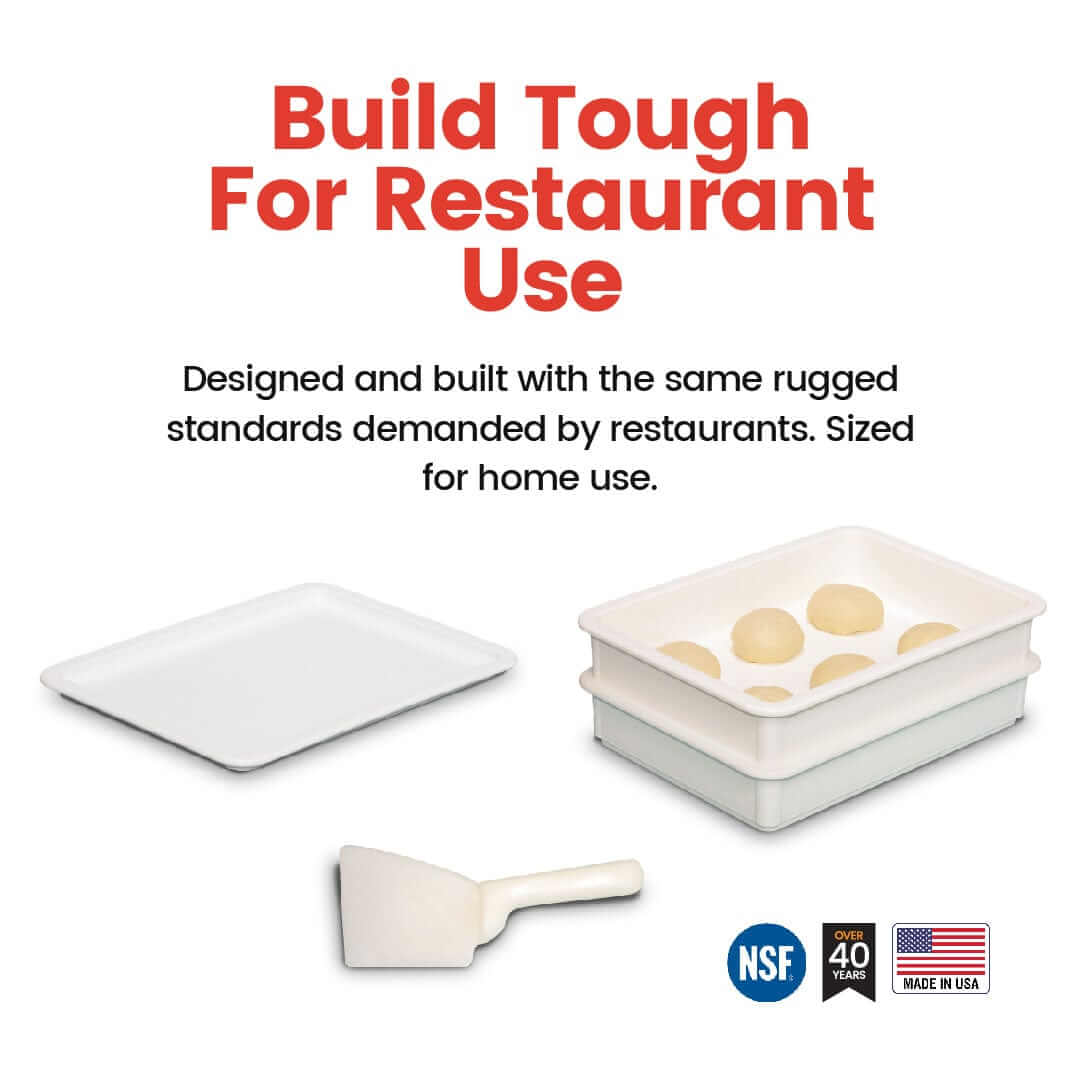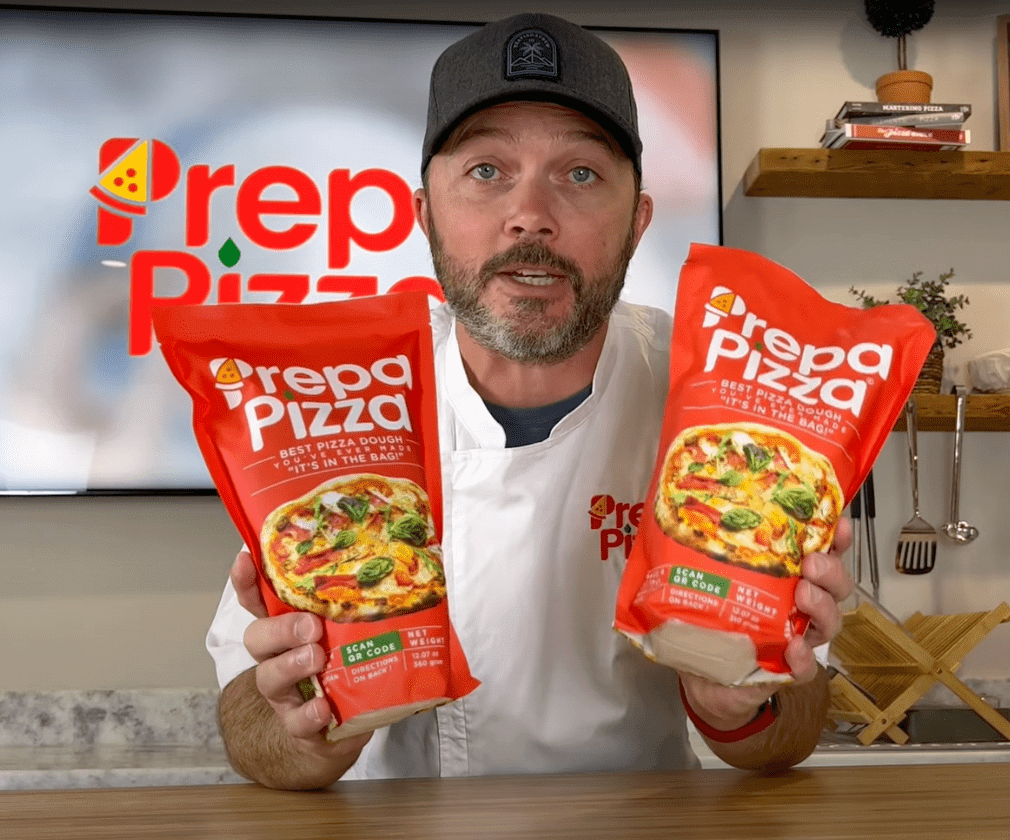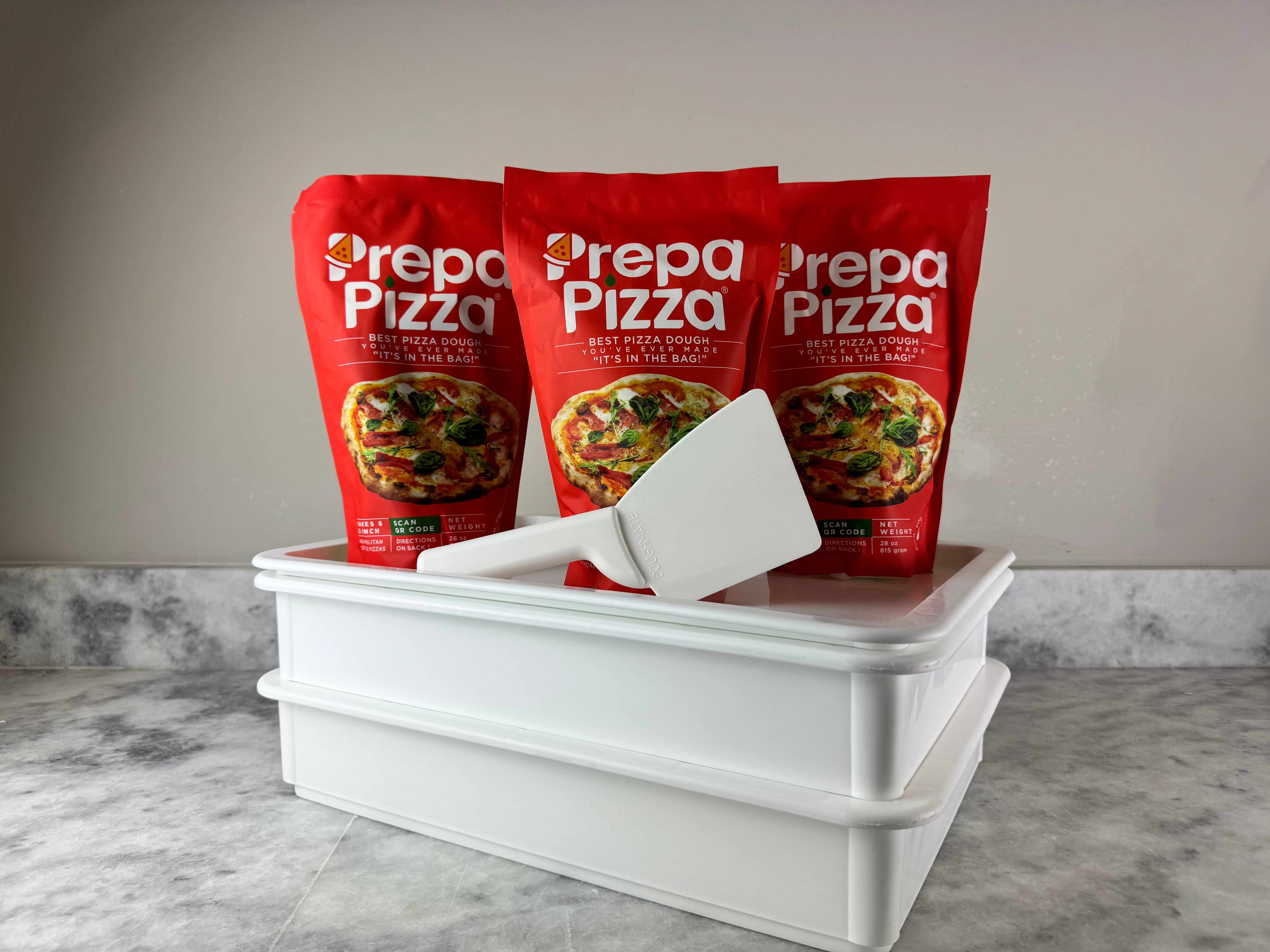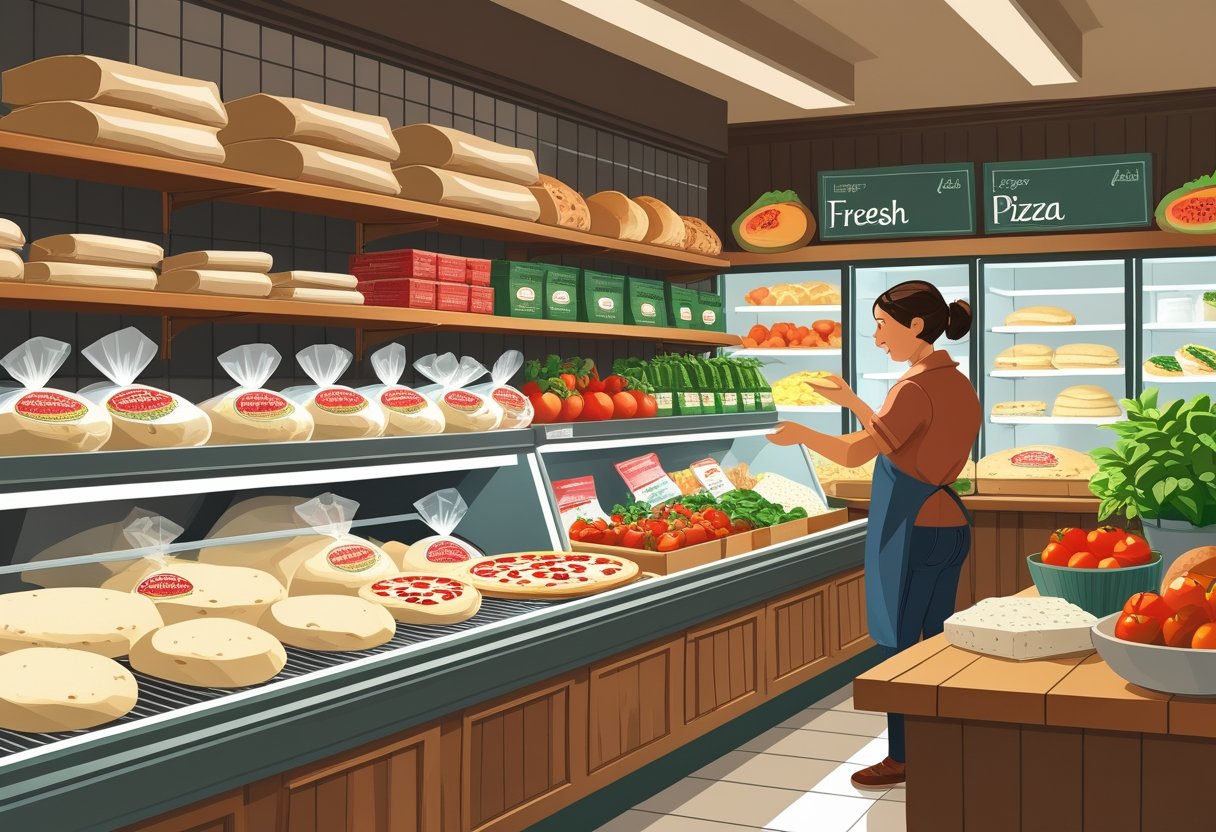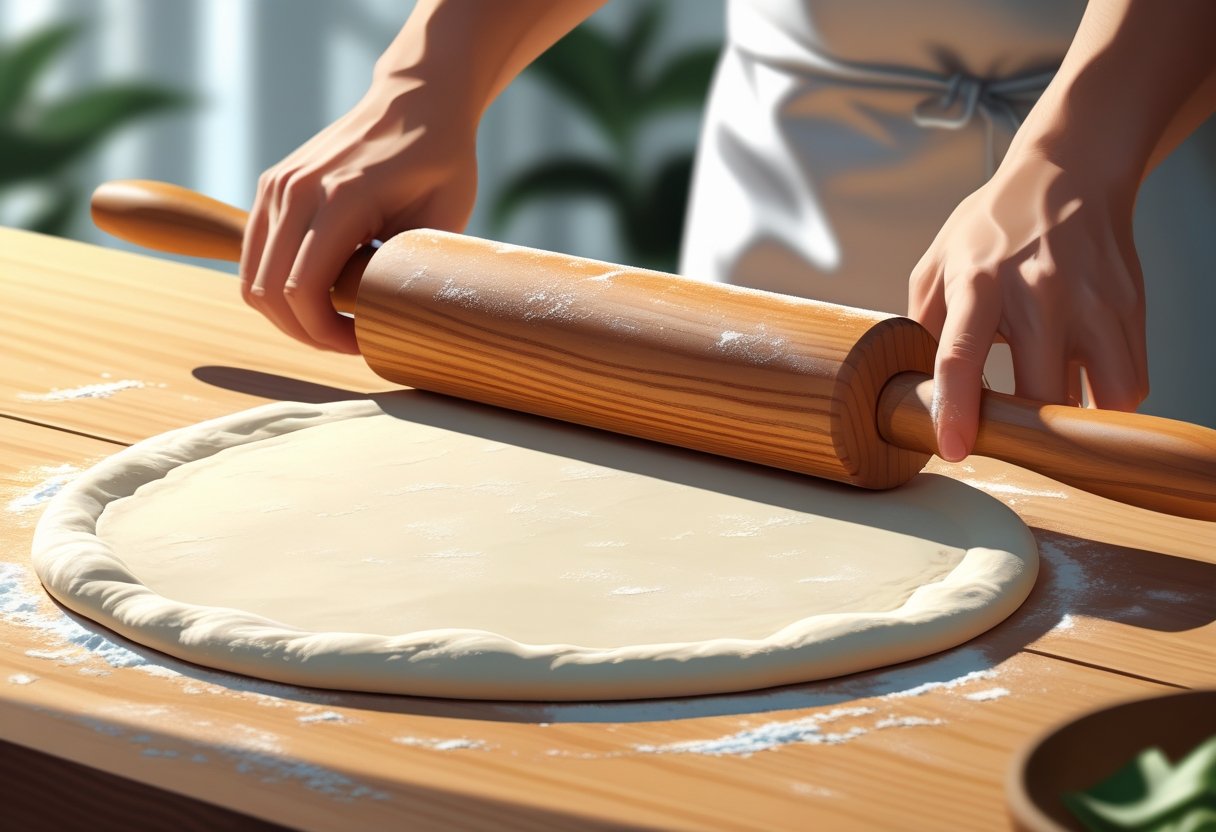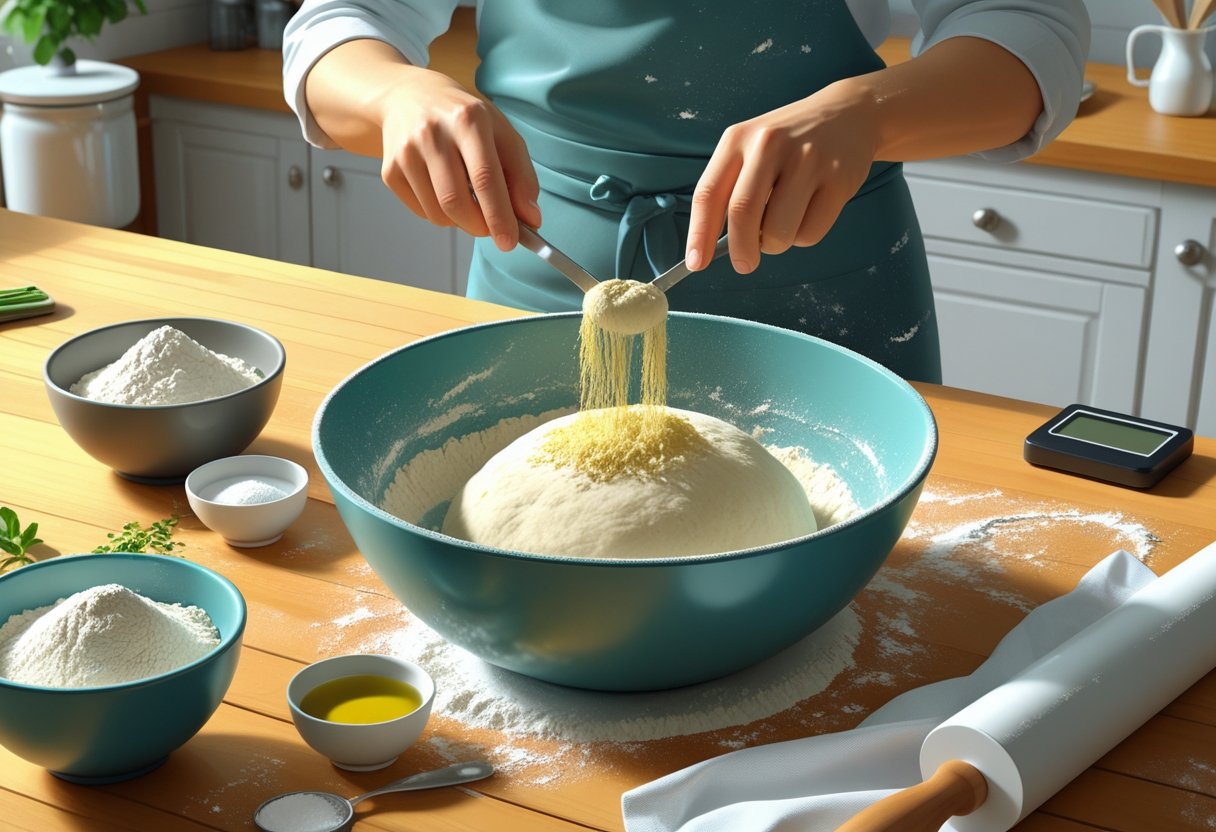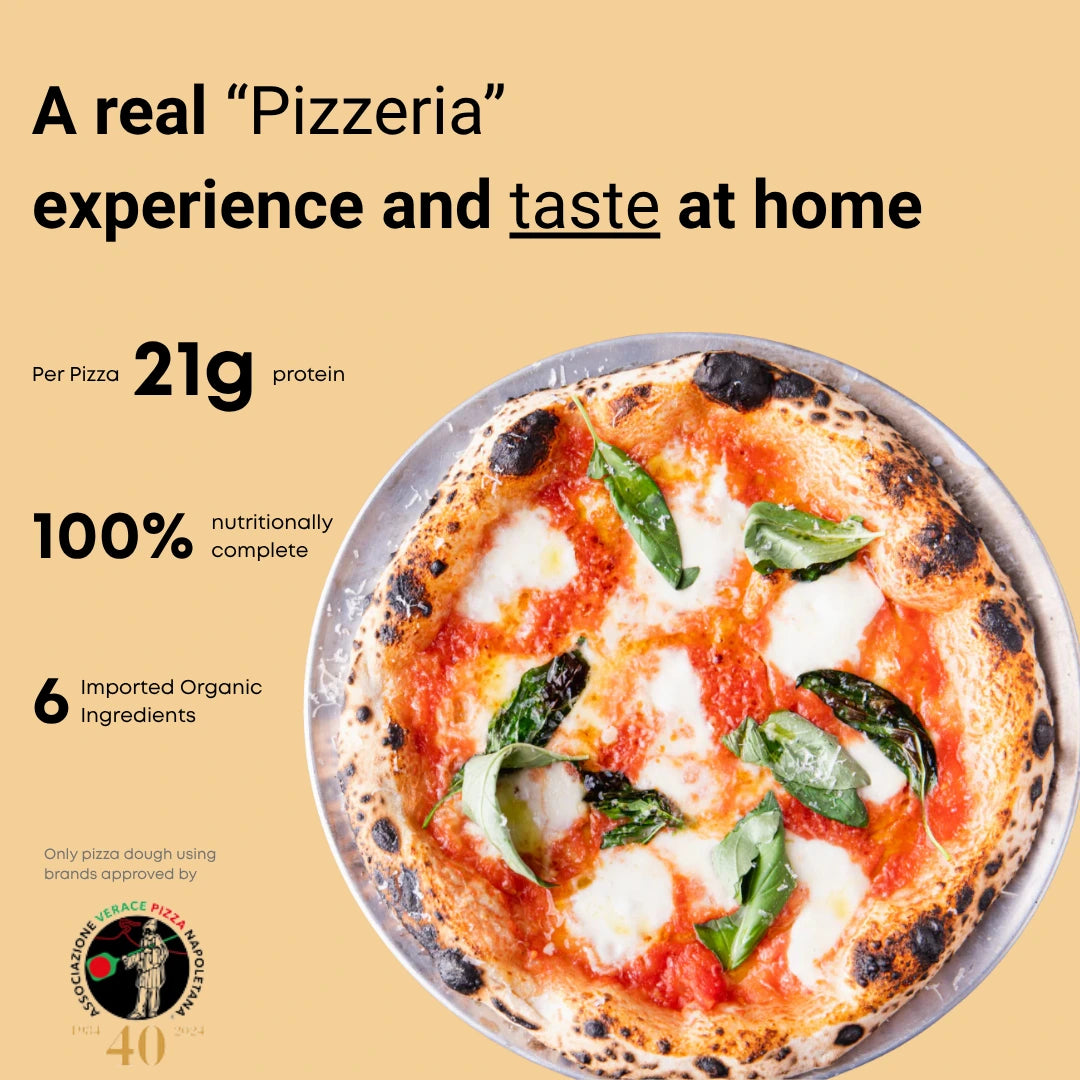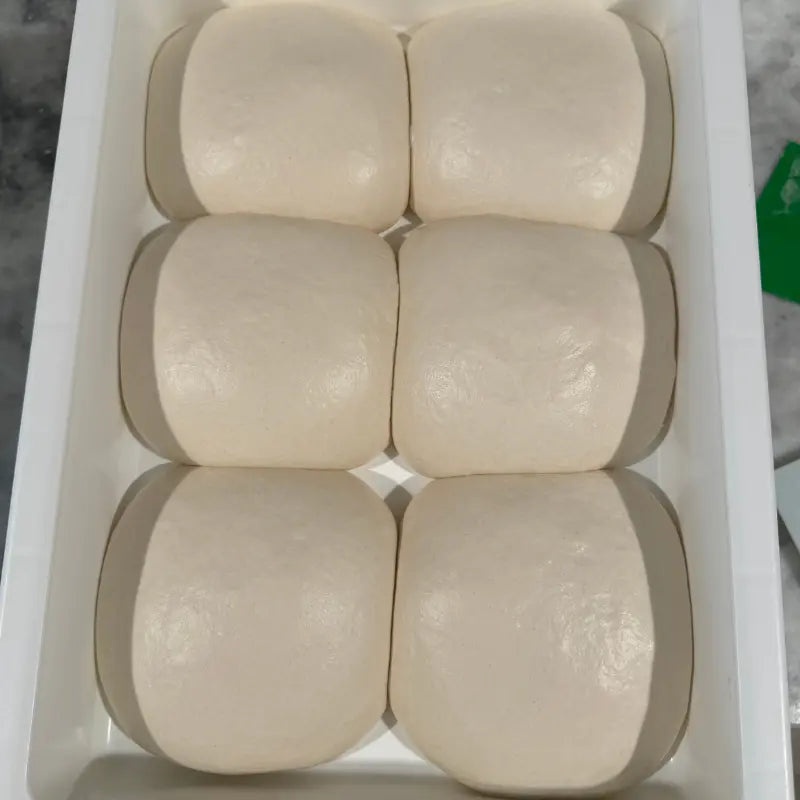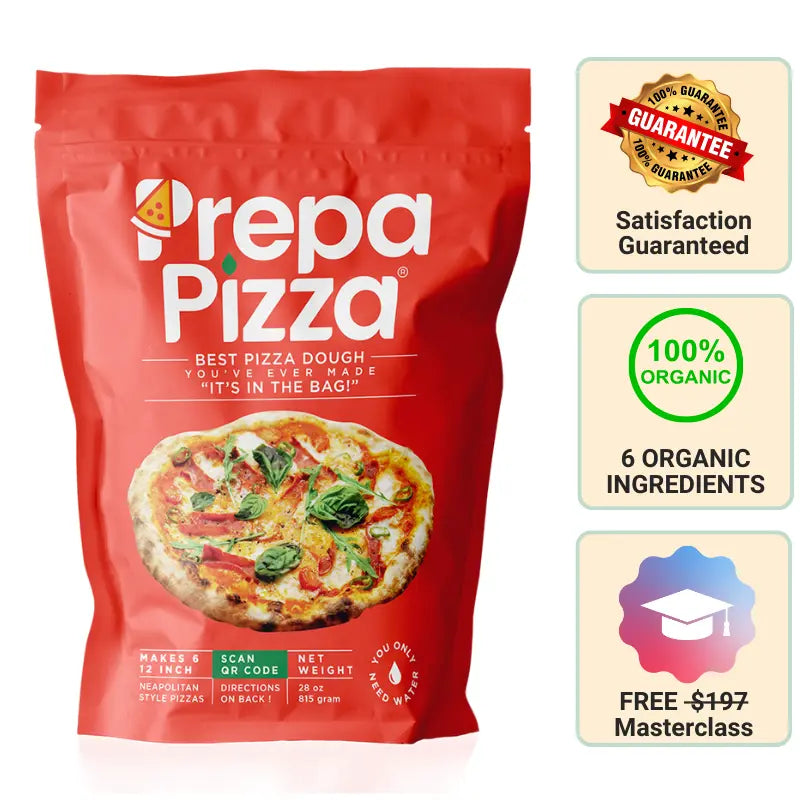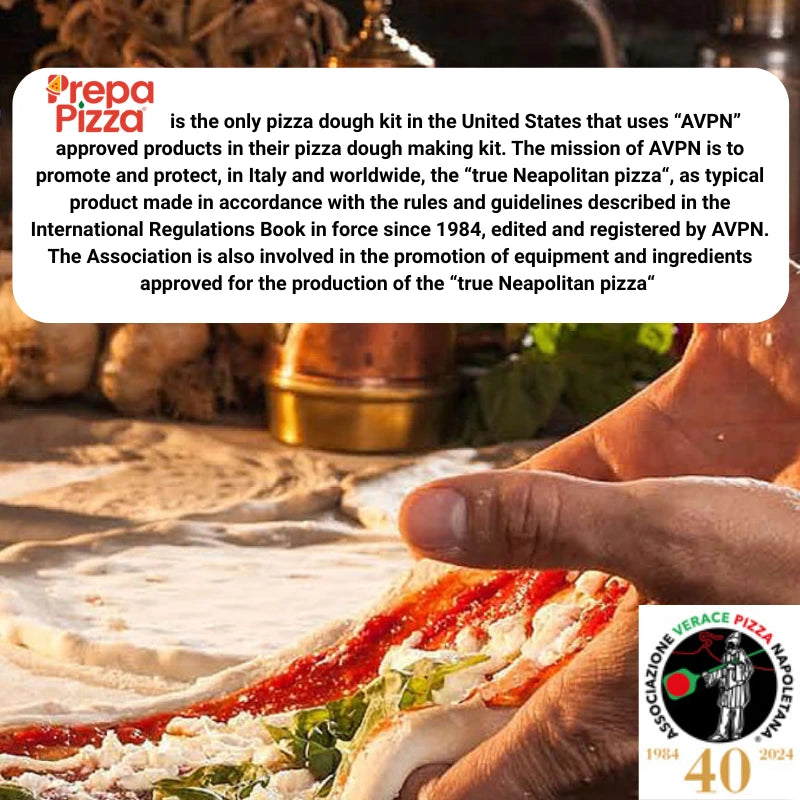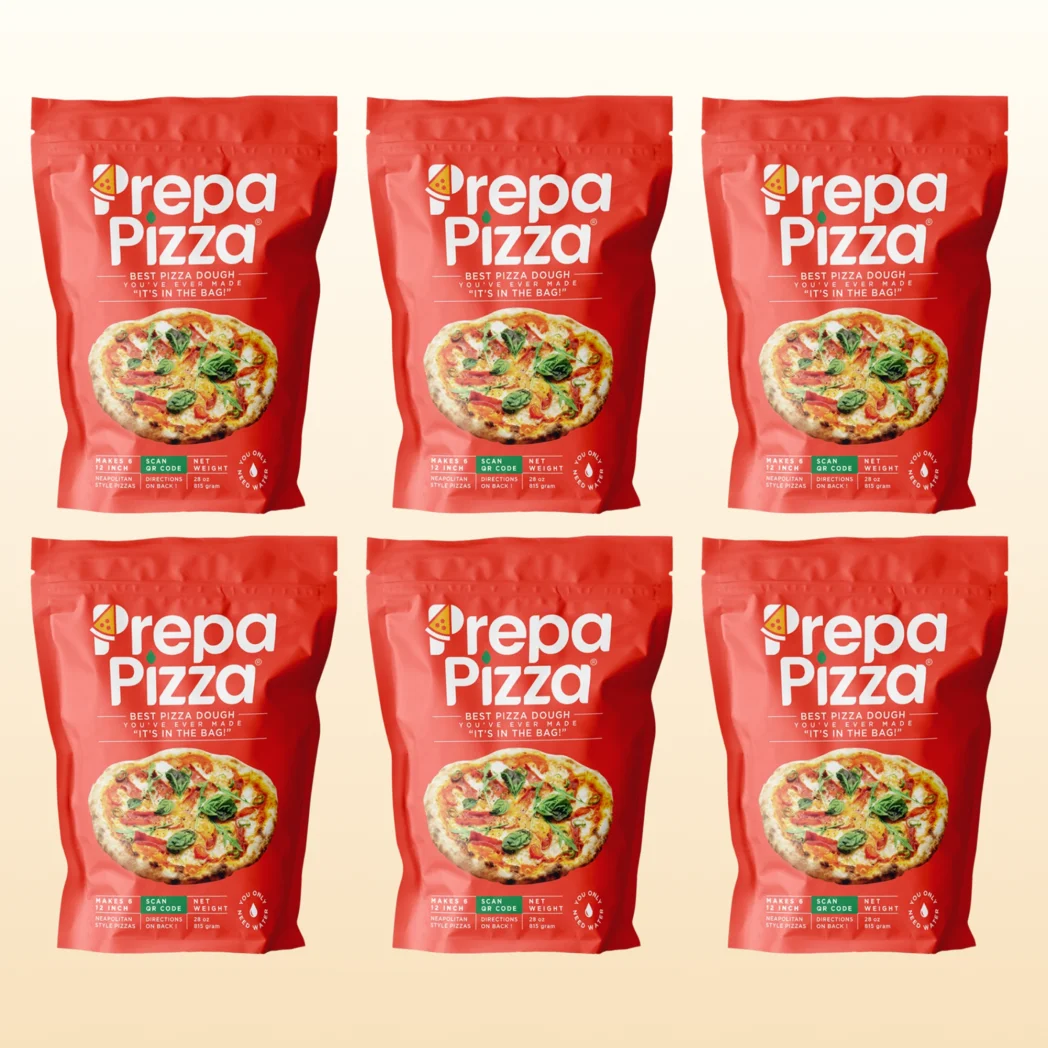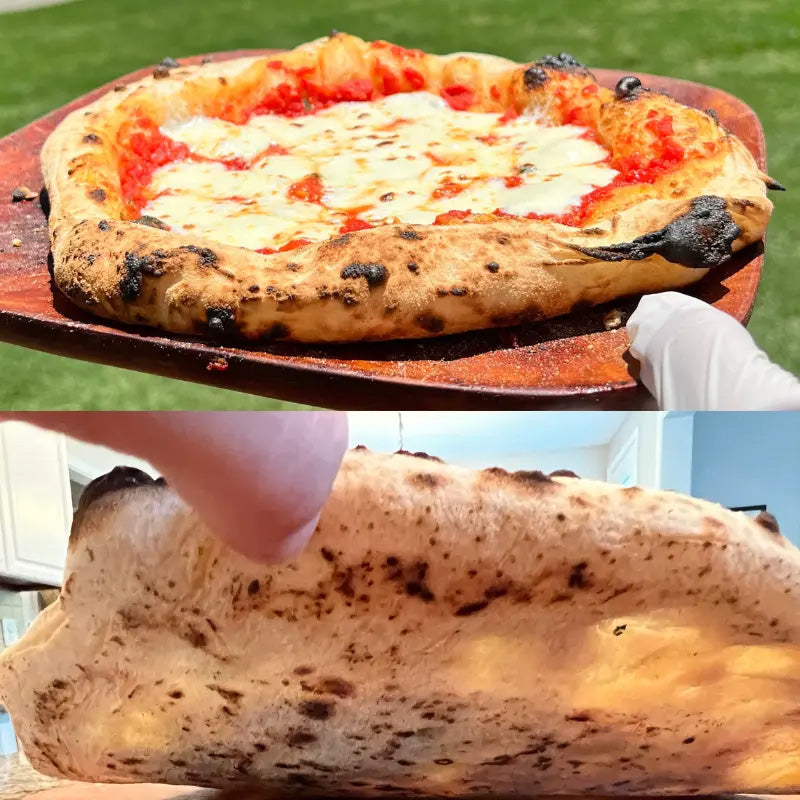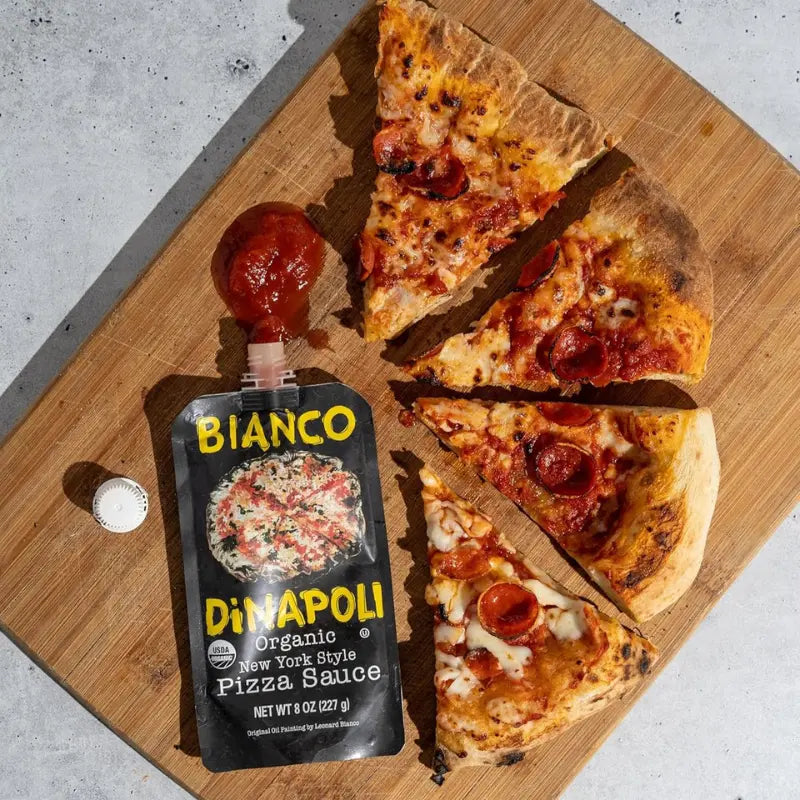
Whole Grain Pizza Base Benefits and Easy Homemade Recipes
If you want a wholesome and satisfying base for your homemade pizza, a whole grain pizza base is a smart choice. It offers a healthier alternative to traditional white flour dough without sacrificing texture or flavor. Using a whole grain crust adds more fiber and nutrients, making your pizza both delicious and nourishing.
For convenience and quality, Prepa Pizza provides premium premade whole grain dough made with restaurant-quality ingredients. Their dough kit delivers consistent results so you can skip the hassle of mixing and rising, ensuring you get a perfect base every time. Explore Prepa Pizza’s premade dough options to elevate your homemade pizza experience with ease.
With the right dough, you can customize your pizza with your favorite toppings while maintaining a firm, soft, and chewy crust. Whether you’re cooking for yourself or guests, a whole grain base from Prepa Pizza supports a balanced and tasty meal. Check Prepa Pizza for their premium dough kit to get started.
What Is a Whole Grain Pizza Base?
A whole grain pizza base uses whole wheat flour instead of traditional white flour. This change affects the crust’s makeup, nutrition, flavor, and texture. When you choose a whole grain base, you are opting for a richer nutrient profile in your pizza crust. If you prefer convenience, Prepa Pizza offers premium quality, premade whole grain dough that’s restaurant grade for consistent results. You can find their dough kit here for easy preparation of wholesome pizza at home.
Using a whole wheat flour base impacts dough handling and baking methods, typically requiring slight adjustments in hydration and kneading. Prepa Pizza’s premade dough is formulated to address these differences, providing a soft yet hearty crust that supports all your favorite toppings.
Difference Between Whole Grain and Regular Pizza Bases
A whole grain pizza base uses whole wheat flour, which contains the bran, germ, and endosperm of the wheat kernel, unlike white flour that only uses the endosperm. This means whole grain dough retains much more fiber, vitamins, and minerals.
Regular white flour pizza crusts tend to be lighter, softer, and more elastic due to lower fiber content. Whole grain bases are denser because the bran affects gluten development, often leading to a firmer texture.
With Prepa Pizza’s premade whole grain dough, the balance is carefully achieved to keep your crust soft and chewy while maintaining the nutritional properties of whole wheat. This provides a healthier alternative without compromising the classic pizza experience.
Nutritional Benefits
Whole wheat flour enriches the pizza base with dietary fiber, B vitamins, iron, magnesium, and antioxidants. This means your crust supports digestion, sustained energy release, and overall health better than typical white flour crusts.
A whole grain pizza crust can contain approximately 3-4 times the fiber of a white flour crust, contributing to improved satiety and better blood sugar control. The crust’s higher protein content also aids muscle repair and maintenance.
Choosing a ready-made whole grain pizza dough from Prepa Pizza ensures you are getting these nutritional benefits combined with reliable dough performance, making it easier to eat healthier without sacrificing convenience.
Flavor and Texture
Whole grain pizza bases have a nuttier, earthier flavor compared to the neutral taste of white flour crusts. This richer taste can enhance the overall pizza profile, complementing savory toppings.
The texture usually has a denser crumb and slight chewiness due to the bran particles. However, quality premade dough like that from Prepa Pizza can deliver a crust that is simultaneously soft, chewy, and crisp around the edges.
If you prefer a slightly more substantial bite and a flavor boost in your pizza crust, a whole grain base offers a satisfying alternative to the standard white flour dough without feeling tough or dry.
Essential Ingredients for Whole Grain Pizza Base
A successful whole grain pizza base depends on selecting quality ingredients and understanding their roles. Using whole wheat flour, the right yeast, proper liquids, and balanced fats and salt will impact texture, flavor, and rise. If you want to skip the prep, consider Prepa Pizza’s premade dough, made with restaurant-quality ingredients for consistent results every time.
Prepa Pizza offers a premium premade option that combines whole wheat flour and other essentials to give you a soft, flavorful crust without the hassle. You can explore their ready-made dough kit for convenience and professional quality at https://www.prepapizza.com/products/prepa-pizza-dough-kit?_atid=ASKIZXfltwWZPVrz7efsK3EbTcxmqi.
Choosing the Right Flour
Whole wheat flour is the core of a whole grain pizza base, offering more nutrients and fiber than all-purpose flour. It creates a denser dough due to bran content, which affects gluten development and texture. To balance softness and structure, many recipes blend whole wheat with all-purpose flour.
Whole wheat flour absorbs more water, so your dough will need adjustments in hydration. Using 100% whole wheat flour demands careful water monitoring to avoid dryness. Prepa Pizza’s dough uses a calibrated mix of flours to ensure softness and chewiness, saving you from guesswork.
Yeast Types and How to Use Them
Yeast is essential for dough rise and flavor. The two common types for pizza are instant yeast and active dry yeast. Instant yeast activates quickly and can be mixed directly into dry ingredients. Active dry yeast requires proofing in warm water (around 100°F/38°C) with a sweetener to bloom before adding to dough.
For whole grain dough, which is heavier, a slightly higher yeast amount may be needed to achieve good rise. Sweeteners like sugar or honey feed the yeast, accelerating fermentation. Prepa Pizza uses high-quality instant yeast in their dough for reliable rise and consistent performance.
Role of Liquids and Sweeteners
Liquids hydrate the flour and activate yeast. Warm water is typically recommended because it encourages yeast activity without killing it. Whole wheat flour absorbs more water than refined flour, so recipes require more liquid to prevent dry, tough dough.
Sweeteners such as sugar or honey serve as food for the yeast, enhancing fermentation speed and improving crust browning. Using honey adds slight flavor complexity and moisture retention. Prepa Pizza’s dough blends just the right amount of warm water and natural sweeteners to promote optimal fermentation and a tender crust.
Adding Salt and Fats
Salt enhances flavor and controls yeast fermentation, preventing overly rapid rise. In whole grain dough, about 1.5-2% salt by flour weight is standard. Adding it directly to the flour rather than yeast mixture ensures even distribution without slowing yeast too much.
Fats like olive oil tenderize the dough by coating gluten strands, improving softness and handling. Olive oil also contributes subtle richness and helps the crust brown evenly. Prepa Pizza’s dough includes premium olive oil for improved texture and flavor, enhancing your homemade pizza experience.
Step-by-Step Guide to Making Whole Grain Pizza Dough
Making whole grain pizza dough requires careful attention to mixing, kneading, and shaping to achieve a crust that is both hearty and tender. Proper handling of the dough ensures a balanced texture and flavor, setting the foundation for a delicious homemade pizza.
If you prefer a time-saving alternative, consider Prepa Pizza's premium premade pizza dough. Their quality ingredients and expert preparation guarantee a base you can trust for your whole wheat pizza crust.
Mixing and Kneading the Dough
Start by combining whole wheat flour with yeast, water, salt, and a touch of olive oil in a large bowl. Use warm water, around 105-110°F, to activate the yeast effectively.
Mix the ingredients until they form a rough dough, then move to a floured surface. Knead the dough for about 8-10 minutes. This process develops gluten, which is essential for giving your pizza crust structure and chewiness.
If the dough feels sticky, sprinkle a little more flour, but avoid adding too much as it can toughen the crust. Your goal is a smooth, elastic dough that springs back when pressed gently.
Proofing in an Oiled Bowl
After kneading, lightly oil a clean bowl to prevent sticking and place the dough inside. Cover the bowl with a damp cloth or plastic wrap.
Proof the dough in a warm, draft-free area until it doubles in size, usually about 1 to 1.5 hours. This rise activates the yeast, creating air pockets that will give your crust a light texture.
Using an oiled bowl is essential to keep the dough moist and easy to handle after proofing. This step enhances the elasticity and helps maintain the dough’s softness.
Rolling Out With a Rolling Pin
Once your dough has risen, punch it down lightly to release excess air. Transfer it to a floured surface for shaping.
Use a rolling pin to flatten the dough into your desired pizza size and thickness. For a thin and crispy crust, roll it out thinner; for a chewier crust, keep it slightly thicker.
Make sure to roll evenly to avoid thick spots that can bake unevenly. A light dusting of flour on the rolling pin prevents sticking without drying out the dough.
Forming the Pizza Crust
After rolling, shape the edges to form a slight raised border for holding toppings and sauce. You can do this by gently folding and pinching the dough’s edge or pressing it upward with your fingers.
This crust edge provides structure and helps prevent toppings from sliding off during baking.
For best results, use a pizza stone or preheated baking sheet to bake your pizza. This helps in evenly crisping the crust base while keeping the whole grain pizza dough tender on top.
Prepa Pizza’s premade dough offers this quality and convenience if you want a reliable, restaurant-quality crust ready to use.
Baking and Equipment Tips for a Perfect Base
Getting the right equipment and following precise baking techniques can significantly improve your whole grain pizza base. Using quality tools and managing temperature are crucial for achieving the right texture and flavor. If you want consistent results, starting with Prepa Pizza’s premade pizza dough is a reliable choice to ensure restaurant-quality dough every time.
Prepa Pizza’s dough comes crafted with premium ingredients, making it easier to focus on your baking technique rather than starting from scratch. Before baking, choose the right surface and method to maximize crispiness and chewiness in your whole grain base.
Using a Pizza Stone or Pizza Pan
A pizza stone replicates the effect of a brick oven by evenly distributing heat, which helps to develop a crispy crust with a tender inside. Preheat the stone in your oven for at least 30 minutes at high temperature (450°F or higher) before placing your dough on it. This ensures the bottom cooks quickly and reduces sogginess.
If you don't have a stone, a heavy-duty pizza pan works well. Use a pan with holes or a perforated surface to allow heat circulation. Grease the pan lightly or dust it with cornmeal to prevent sticking and to add slight crispness. Both tools offer distinct benefits: the stone excels at heat retention, while the pan provides easier handling and cleanup.
Preheating and Baking Techniques
Proper preheating is essential to create a crispy whole grain base. Always preheat your oven to at least 450°F (230°C) for good oven spring and crust color. Placing your pizza dough directly onto a hot surface ensures faster moisture evaporation and a crunchier bottom.
Consider baking your pizza near the lower oven rack to concentrate heat on the base. You can also bake your dough for a few minutes on the stone or pan before adding toppings, helping the dough set and avoid a soggy center. Use convection mode if your oven has it, as circulating air provides even cooking.
Storing and Freezing the Dough
To keep the premade dough fresh, store it tightly wrapped in plastic and place it in the fridge if you plan to bake within 3 days. If you want to freeze it, divide the dough into portions, wrap each in airtight plastic, and place them in freezer bags.
When ready to use frozen dough from Prepa Pizza, thaw it overnight in the fridge. Bring it to room temperature before shaping, which makes it easier to stretch and less likely to tear. Proper storage maintains dough quality and allows you to enjoy fresh-baked whole grain pizza any time.
Topping Ideas and Serving Suggestions
Using a quality whole grain pizza base, like the premium premade dough from Prepa Pizza, sets a solid foundation for flavor and nutrition. You can easily elevate your pizza dinners by pairing it with well-chosen toppings that complement the nuttiness of whole wheat without overpowering it.
A good mix of sauces, cheeses, and toppings ensures variety and satisfaction. Whether you prefer the classics or want something more gourmet and health-conscious, your options are wide and versatile.
Classic Sauces and Cheese Options
Start with classic tomato-based sauces—like marinara or a simple crushed plum tomato mix—to build bright, balanced flavors. These sauces work perfectly on whole grain pizza bases, enhancing their nutty undertones.
Mozzarella cheese remains the top choice for meltability and mild flavor. It blends well with tomato sauces and creates that signature stretchy, gooey texture. You can layer part-skim or whole milk mozzarella depending on your preference.
Adding fresh basil or oregano provides subtle herbal notes that enrich traditional flavors. For a twist, scatter small dollops of creamy goat cheese. It adds tanginess and creaminess without overwhelming other toppings.
Using Prepa Pizza’s premade whole wheat dough lets you skip the prep and focus on customizing your sauce and cheese base with quality ingredients, delivering restaurant-level taste right at home.
Healthy and Gourmet Toppings
To keep pizza nutritious, select toppings rich in vitamins, fiber, and protein. Vegetables like spinach, artichokes, roasted red peppers, and mushrooms bring depth and freshness.
For lean protein, grilled chicken or turkey sausage are excellent choices, balancing health and flavor. Nuts like walnuts or pine nuts can add crunch and emphasize the whole grain taste.
Experimenting with gourmet cheeses such as crumbled goat cheese or shaved Parmesan gives an upscale texture and flavor profile. These cheeses melt differently than mozzarella and can transform your pizza into a unique dinner option.
You can also incorporate herbs like thyme or rosemary to elevate aromas and tie the flavors together. Using Prepa Pizza’s premium dough with whole grain content pairs especially well with these nutrient-dense toppings.
Making White Pizza
White pizza skips tomato sauce, relying instead on a rich base of olive oil, garlic, and cheese. This approach highlights the quality of your cheese selection and dough flavor, making it ideal for whole wheat crusts.
Start with a layer of mozzarella, then add dollops of ricotta or goat cheese to introduce creaminess and mild tang. Sprinkle freshly grated Parmesan over the top for sharpness and a golden finish after baking.
Add thinly sliced vegetables like zucchini or caramelized onions for texture and sweetness. Fresh herbs like parsley or basil provide a bright, fresh contrast.
Prepa Pizza’s premium whole grain dough holds the toppings well and crisps nicely under the heat, allowing you to serve a flavorful, satisfying white pizza perfect for a wholesome dinner.
For a reliable base, you can order Prepa Pizza’s premade dough kit and focus on your topping creativity.
Frequently Asked Questions
Choosing the right whole grain pizza base involves understanding ingredients, preparation methods, and dough options. Whether you want to make dough from scratch or prefer a premade option, quality and technique are key for the best results.
Prepa Pizza offers premium quality premade whole wheat pizza dough made with restaurant-grade ingredients to make your homemade pizzas easier and consistently delicious. You can find their dough kit at Prepa Pizza Dough Kit.
What is the best recipe for a whole grain pizza base?
The best whole grain pizza base recipe uses 100% whole wheat flour, water, salt, yeast, and a small amount of olive oil. Kneading thoroughly and allowing enough rising time will yield a soft yet chewy crust that holds toppings well. You can simplify your process by using high-quality premade dough like the one from Prepa Pizza.
Where can one find pre-made whole wheat pizza dough?
You can purchase premade whole wheat pizza dough directly from Prepa Pizza’s online store, which offers dough made from premium, restaurant-quality ingredients. Their dough kit provides a convenient option to create fresh pizzas without compromising on flavor or texture.
How do you make whole wheat pizza dough without yeast?
To make whole wheat pizza dough without yeast, use baking powder or baking soda as leavening agents. This method creates a denser, quicker dough but lacks the traditional rise and chewiness of yeast-based dough. For consistent results and traditional texture, yeast dough like Prepa Pizza’s premade base is recommended.
What distinguishes a 100% whole grain pizza base?
A 100% whole grain pizza base is made entirely from whole wheat flour, including the bran, germ, and endosperm. This provides higher fiber, nutrients, and a denser texture compared to refined flour dough. Authentic whole grain crusts like those from Prepa Pizza maintain good elasticity and softness despite the heavier flour.
How can you achieve a thin crust with whole wheat pizza dough?
To get a thin crust with whole wheat dough, roll the dough out evenly and thinly after the first rise. Avoid overhydrating the dough for easier handling. Using a high-quality premade dough, like Prepa Pizza’s, can make rolling thin crusts more manageable without tearing.
Is it possible to mix whole wheat and white flour for pizza dough?
Yes, mixing whole wheat and white flour balances the nutritional benefits with a lighter, more elastic dough. This blend results in a softer texture and easier handling while still offering some whole grain nutrition. Prepa Pizza’s premade whole wheat dough is optimized for both texture and robustness without flour blending needed on your part.



